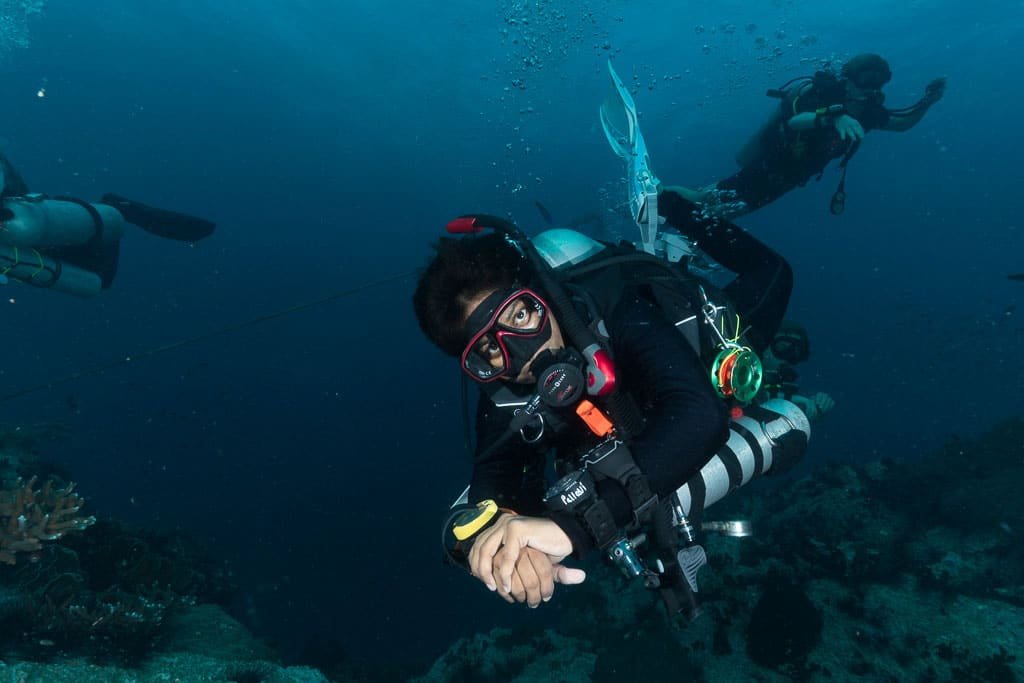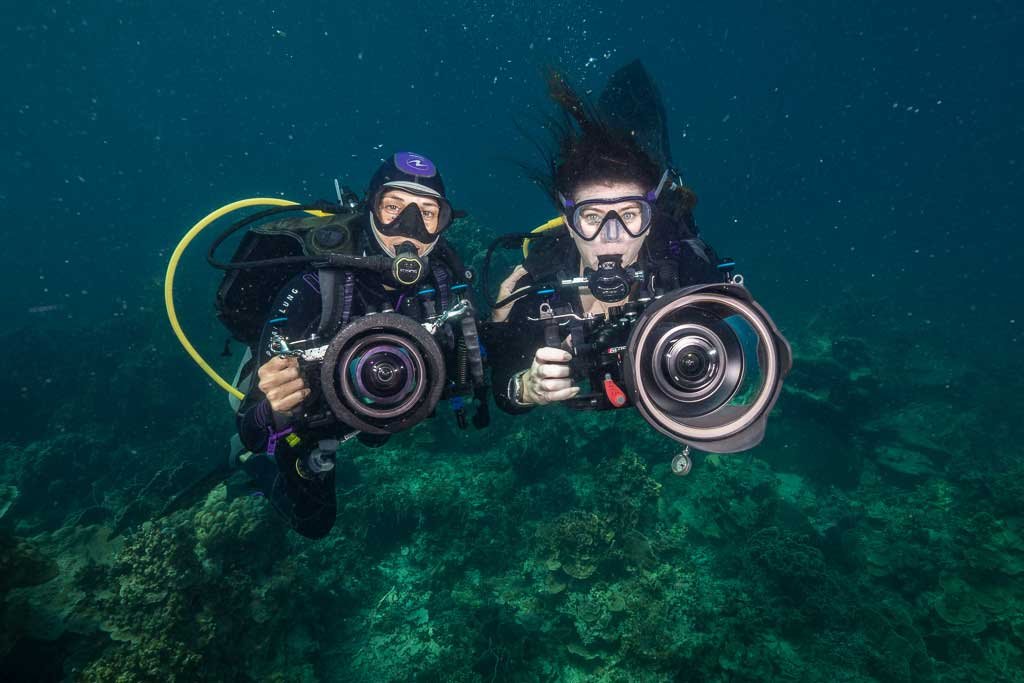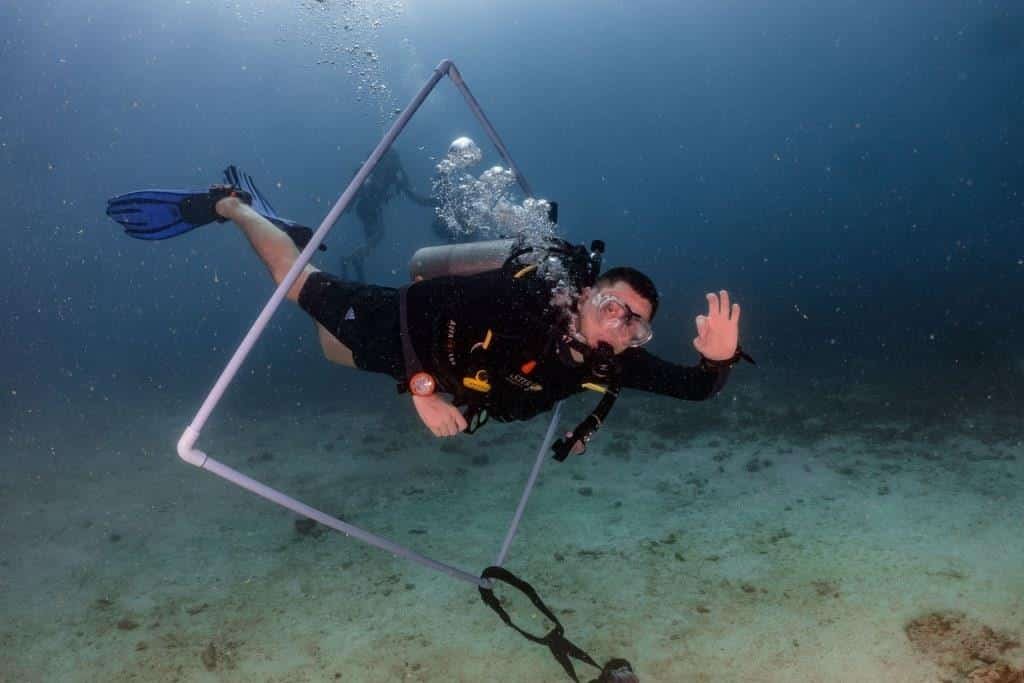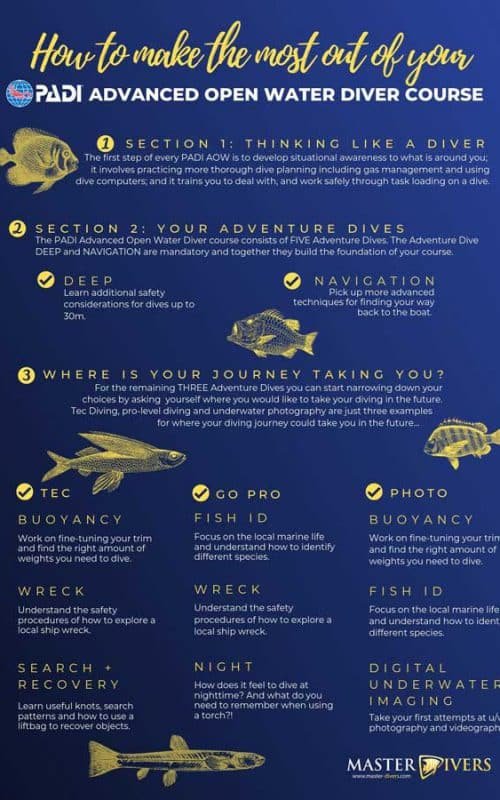Congratulations Open Water Diver; welcome to the other 72%!
Now that you have achieved your Open Water certification, you have learned the rules of diving. You have learned safety procedures and you have collected a tool kit of dive skills. Some of these skills, such as buddy checks and buoyancy control, you will use on every dive. Other skills such as various emergency procedures, you hope only to have to use in training simulations.
But what is next? You’ve ignited an exciting new passion, but what can you do with it? You know the basic rules of diving, but how do you apply these rules in a consistent and safe way to the real life diving situations you are in? This is where the PADI Advanced Open Water course comes in. This course helps you spread your fins into a new world of discovery. It’s also designed to increase your sphere of awareness underwater, to help you to achieve different dive objectives, and to further develop good habits that help maintain a high level of safety on every dive.
Who can take the PADI Advanced Open Water Course?
The first thing to say is that you do not need to be an “advanced” diver to take the PADI Advanced course. Some divers may wait several years after initially certifying before enrolling in this course. Many others will take this course immediately after completing their PADI Open Water Diver certification. It’s worth noting that there are a growing number of dive locations and Liveaboards as well as conservation activities that list an Advanced diving certification as a minimum requirement. With this knowledge, and the updated version of the PADI Advanced Open Water Diver course fully integrated, there’s never been a better time to continue your training!
The second thing to note is that you do not have to be a PADI diver to join the PADI Advanced course. Holding an Open Water level, autonomous diver certification from any recognized training agency (plus as with any dive training, being medically fit to dive) is the only pre-requisite for this course.
What is involved in the PADI Advanced Open Water Diver course?
The PADI Advanced Open Water course differs from the Open Water course, in that it’s much more focused on practical skills. At Master Divers, you will normally need two days of training to complete the 5 Adventure Dives required for certification. As with all PADI courses, there is some independent study including reading and completing knowledge development questions to be done ahead of time. These are reviewed with your instructor in the academic session, but there is no final exam. The rest of the course (time wise around 85% of it) is spent on practical training – dive planning, completing new skills and reflecting on the success of the open water elements you completed, and what you can do to improve in the future.
The PADI Advanced course can be thought of as combining two streams of training. The first stream is designed to develop your mind set and to encourage “Thinking Like A Diver”. The revised PADI AOWD includes a mandatory section covering this. The emphasis is on gas planning, computer use, and achieving the primary dive objective of every dive – to return safely. This section also helps train you on how to prioritize your responses to underwater situations. Included in this stream of training is the required Adventure Dives of the Advanced course; the aspects of diving that all scuba enthusiasts should have experience in – Underwater Navigation and Deep Diving.

The second stream of training involves 3 elective dives of your choice. This part of training is about broadening your horizons and opening your eyes to different diving activities that are available to you. These dives will expose you to new experiences; train new skills; enable you to make new discoveries; allow you dive in new locations, environments and conditions; and, enable you to learn to properly use new equipment.
Learning to think like a diver
The purpose of this part of the PADI AOWD is to build on and refine the skills you learned in your Open Water course. It also allows you develop your scuba thinking whilst under instructor supervision. Thinking like a diver means developing situational awareness to what is around you; it involves practicing more thorough dive planning including gas management and using dive computers; and it trains you to deal with, and work safely through task loading on a dive.
Navigation and Deep diving are included in this section. The skills, planning and additional safety procedures that are necessary for deep dives are wisely employed as part of the planning and execution of all dives. Navigation skills are also important to help reduce confusion or anxiety on a dive, to help maintain the buddy system, and of course to locate the boat at the end of the dive thus avoiding long surface swims.
Expanding your horizon
Bear in mind that the local environment and the facilities and logistics of the dive centre you are at will dictate your choices somewhat. You’re not going to take a drysuit course in the tropics or an altitude dive where there are no suitable bodies of water, for example. The great news is that when you come to complete your PADI Advanced Open Water Diver course with us here at Master Divers, we include the PADI Enriched Air Nitrox Diver Adventure Dive for free with our Advanced course! Enriched Air Nitrox is the most popular PADI Specialty course, and can be of benefit for all divers, regardless of what your longer term diving goals are. This means all of our Advanced students can complete the full PADI Nitrox Specialty as an add-on to their Advanced course for a special discounted rate. This also only requires an additional academic session so does not require any additional day on top of the existing two of your PADI Advanced. Therefore, and taking into account local conditions, here is a list of the dives that you can expect to choose from:
- Boat Diving
- Digital Underwater Imaging
- Fish Identification
- Night Diving
- Peak Performance Buoyancy
- Search and Recovery
- Underwater Naturalist
- Wreck Diving.
How do you select the dives that are best suited to you?
One way to start narrowing down your choices is to ask yourself where you would like to take your diving in the future. Since PADI Adventure dives normally are equivalent to the first dive of the corresponding Specialty course, they can be used as credit towards that specialty. So knowing where you are going with diving is one way that can help you to select the most appropriate dives to help you get there.
For example, if becoming a PADI Dive Professional such as a Divemaster is in your sights, it makes sense to select dives that will be useful in your future career. Therefore choices such as Night Diving, Fish Identification and Wreck Diver are likely to be useful dives for you.
Do you already love land-based photography, and see yourself as growing an interest in that area underwater? In that case Peak Performance Buoyancy, Digital Underwater Imaging and Fish ID will be useful training.

Finally if you would like to explore the challenging world of Tec diving, beginning your training with Search and Recovery, Peak Performance Buoyancy, Wreck Diving would surely be useful.
A word from the Pros
Our Head Instructor, Jason, has the following advice if you are trying to select which dives you will complete in your PADI AOWD:
Some Adventure Dives such as Peak Performance Buoyancy or Search and Recovery are relatively “skill-intense” dives. This means you will likely need to spend the majority of those dives working to meet the secondary objectives – the performance requirements of that particular Adventure Dive. On the other hand other Adventure Dives such as Wreck Diver or Night Diver, are more about getting experience in that field, or the observations you make during those dives. A well-rounded PADI AOWD course should include a balance of more technical, skills-based dives, and more observational dives.
Having said that, for most divers, taking the Peak Performance Buoyancy Adventure Dive is one of the most rewarding dives they do. The techniques and skills that are practiced in that dive can be applied not just to all of the rest of your PADI Advanced course dives, but to every single dive you complete from then on.
Ask your PADI Instructor for help and advise you on which Adventure Dives are best for you, and to help you to create a well-rounded and fulfilling Advanced course.

Where to go after your PADI Advanced Open Water Course?
5 different Adventure dives are required for your certification, but it doesn’t have to finish there. If you are curious about any other diving specialties but are not sure it’s 100% for you, taking an Adventure Dive in that area is a great way to test the waters (excuse the pun!). If you love it, remember you can use that dive as credit towards the full Specialty. This will save you both time and money when you come to complete the full Specialty course.
As a PADI AOWD you already hold the first training dive of 5 different PADI Specialty courses. This means you have the building blocks of achieving the highest certification level in recreational diving. All you need to do is complete those Specialty courses, certify as a PADI Rescue Diver, and log 50 dives and you can apply to be a PADI Master Scuba Diver, which is a gold standard in the industry and represents divers who have both breadth and depth of diver training.
Have more questions? Contact us for more information, or if you are ready to join the fun, sign up for you PADI Advanced Open Water Diver course today!
Photo & video credits: Christine Albanese, Rob Kelly, PADI

